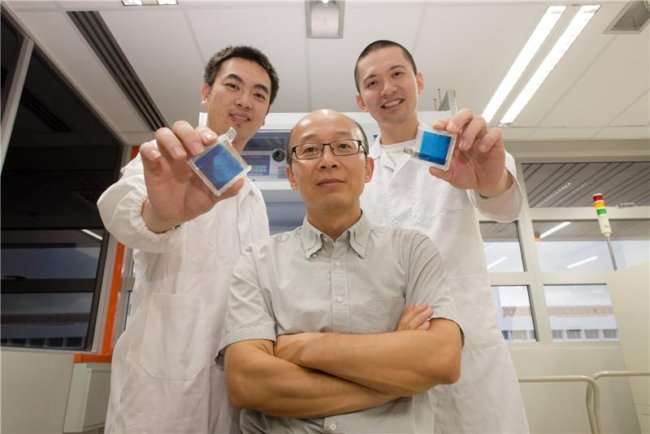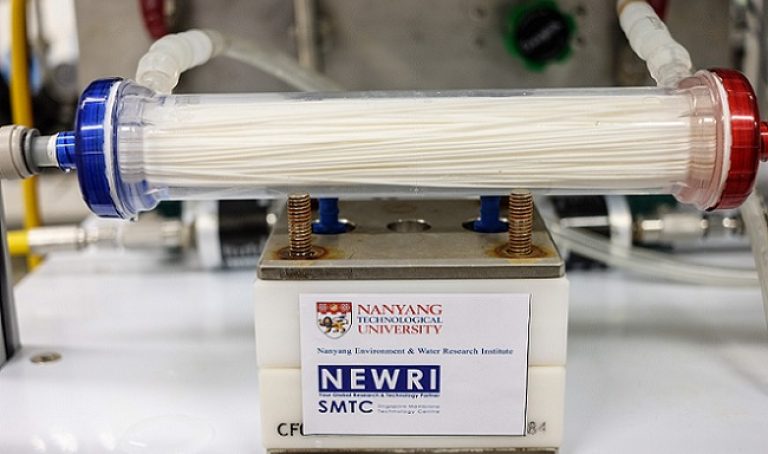
AsianScientist (Dec. 24, 2014) – Scientists have developed a smart window which can darken or brighten without the need for an external power source. This unique self-tinting window, described in a paper published in Nature Communications, requires zero electricity to operate and is also a rechargeable battery.
Currently, the window solutions in the market either use permanent tinting which cannot brighten at night or windows that can change their light transmission properties with the help of an external power source. The smart window developed by researchers at the Nanyang Technological University (NTU), however, can be turned into a cool blue tint in bright daylight and then revert back to clear glass at night or as required.
The trick to making the self-powered smart window is a new technology developed by Professor Sun Xiaowei’s team from NTU’s School of Electrical and Electronic Engineering.
“Our new smart electrochromic window is bi-functional; it is also a transparent battery,” he explained. “It charges up and turns blue when there is oxygen present in the electrolyte—in other words, it breathes.”

The NTU smart window contains a liquid electrolyte placed in between two glass sheets coated with indium tin oxide (ITO), commonly used as transparent conductive coatings for television displays. One sheet is coated with an additional layer of a pigment known as Prussian Blue and the other is attached to a thin strip of aluminium foil. The Prussian Blue gives the glass a blue tint when it is fully charged.
The two glass sheets are connected by typical electrical cables. When the electrical circuit between them is broken, a chemical reaction starts between Prussian Blue and the dissolved oxygen in the electrolyte, turning the glass blue. To turn off the blue tint, the electrical circuit is closed to discharge the battery, turning the Prussian Blue into a colorless Prussian White.
The technology could be used to adjust the amount of sunlight coming into buildings in the day, promising significant savings on cooling and lighting costs.
“Our technology is very attractive as a zero-sum consumption smart window. Buildings owners and even common households can reap energy savings right from the outset and over the long term. Developers who are looking at constructing environmentally-friendly green buildings will find our technology attractive for their building plans,” said Sun.
The NTU team is now enhancing their invention and is looking forward to collaborating with industry partners to commercialize their technology.
The article can be found at: Wang et al. (2014) A Bi-Functional Device for Self-Powered Electrochromic Window and Self-Rechargeable Transparent Battery Applications.
——
Source: Nanyang Technological University.
Disclaimer: This article does not necessarily reflect the views of AsianScientist or its staff.












